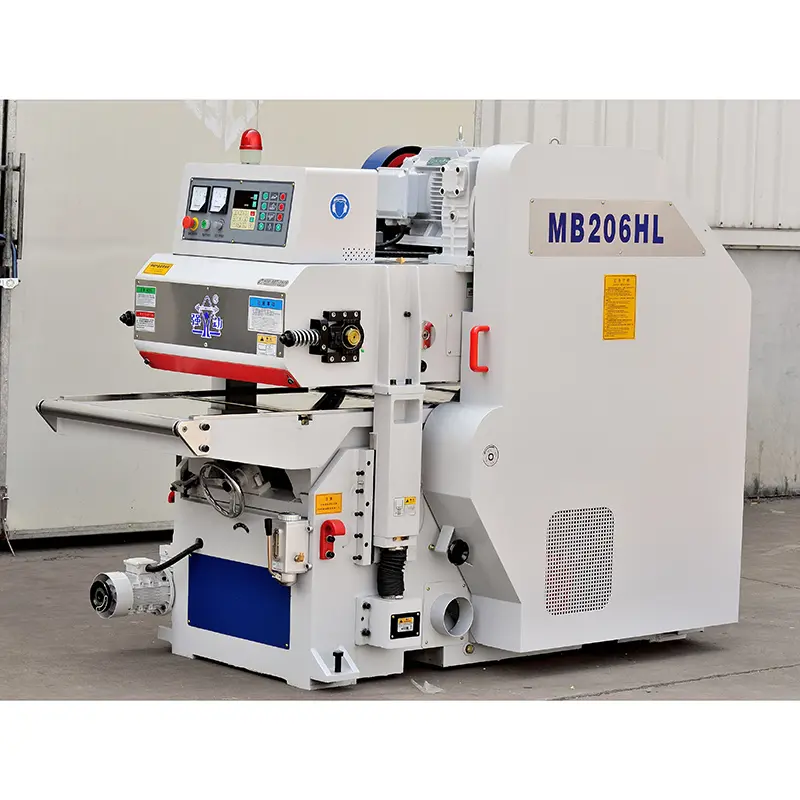Carpentry is an art that requires precision, patience, and the right tools. Among the many tools available to woodworkers, a double-sided router stands out as a game changer. This powerful machine not only saves time but also ensures your wood pieces are perfectly smooth and even. In this comprehensive guide, we’ll delve into the world of double-sided planers, exploring their benefits, how to use them, and tips for maintaining them.
What is a double-sided planer?
A double-sided planer, also known as a double-sided planer, is a woodworking machine designed to simultaneously plan the top and bottom surfaces of a piece of wood. This tool is especially useful for achieving uniform thickness and a smooth surface on both sides of the wood, which is essential for making high-quality furniture, cabinets, and other wood products.
Benefits of using a double-sided planer
- EFFICIENCY: One of the most significant advantages of a double-sided planer is its efficiency. By planing both sides of the wood at the same time, you can significantly reduce the time and effort required to achieve the desired thickness and smoothness.
- Precise: Double-sided planers are designed to provide precise and consistent results. This precision is critical for projects that require precise measurements and uniform surfaces.
- Quality: The ability to plan both sides of the wood simultaneously ensures a high quality final product. The smooth, even surface obtained with a double-sided planer is ideal for finishing and further processing.
- VERSATILITY: The double-sided plane can handle a variety of wood types and sizes, making it a versatile addition to any woodworking shop.
How to use a double-sided plane
Using a double-sided planer may seem daunting at first, but with the right approach, it can become an easy process. Here are the steps to follow:
- Preparation: Before using the planer, make sure the wood is free of nails, screws, or any other foreign objects that could damage the blade. Measure the thickness of the wood to determine the initial settings for your planer.
- Adjust the Planer: Set the planer to the desired thickness. Most double-sided planers have adjustable settings that allow you to control the amount of material removed from each side. Start with conservative settings to avoid removing too much material at once.
- Feeding Wood: Place the wood on the feed table and feed it into the planer. Make sure the wood feed is straight and even to avoid uneven planing. The planer will automatically feed the wood into the machine while planing both sides.
- Inspection results: After the wood passes through the planer, check the thickness and smoothness of the surface. If necessary, adjust settings and pass the wood through the planer again until you achieve the desired result.
- SAFETY FIRST: When using a double-sided planer, be sure to wear appropriate safety equipment, such as safety glasses and ear protection. Keep hands and fingers away from machine blades and moving parts.
Tips for maintaining a double-sided planer
Proper maintenance is crucial to keeping your double-sided planer in top condition and ensuring its longevity. Here are some maintenance tips:
- Regular Cleaning: Clean the planer after each use to remove wood chips, dust and debris. This will prevent buildup from affecting the machine’s performance.
- Blade Maintenance: The blade of your double-sided planer is critical to achieving smooth and precise results. Check blades regularly for wear and damage and replace as necessary. Regularly sharpening your blades will also help maintain their effectiveness.
- Lubrication: Keep all moving parts of the planer well lubricated to ensure smooth operation. Refer to the manufacturer’s guidelines for appropriate lubricant type and frequency of use.
- Alignment Check: Regularly check the alignment of the planer to ensure even planing on both sides. Misalignment can cause uneven surfaces and reduce the quality of the final product.
- Follow Manufacturer’s Instructions: Always follow the manufacturer’s maintenance and operating instructions. This will help you avoid common problems and ensure your planer operates safely and efficiently.
Choose the right double-sided planer
When choosing a double-sided plane for your woodworking shop, consider the following factors:
- Size and Capacity: Choose a planer that fits the size and thickness of wood you typically use. Larger planers are suitable for heavy-duty projects, while smaller planers are suitable for hobbyists and small shops.
- Power and Speed: The power and speed of a planer affects its performance. Higher-powered planers can handle harder woods and larger workpieces, while variable speed settings provide greater control over the planing process.
- Build Quality: Invest in a sturdy and durable planer. High-quality materials and construction will ensure that the planer can withstand regular use and provide consistent results.
- FEATURES: Look for additional features that enhance your planer’s capabilities, such as digital thickness displays, dust collection systems, and adjustable feed speeds.
- BRAND AND WARRANTY: Choose a reputable brand with a good track record of quality and customer support. A warranty gives you peace of mind and protects your investment.
in conclusion
A double-sided plane is an invaluable tool for any woodworker who wants to achieve high-quality, precise and efficient results. By understanding how to use and maintain this powerful machine, you can take your woodworking projects to the next level. Whether you are a professional woodworker or a hobbyist, a double-sided planer can help you create beautiful and even wood products with ease. Invest in a quality planer, follow the correct techniques, and enjoy the benefits of this essential woodworking tool.
Post time: Sep-18-2024

